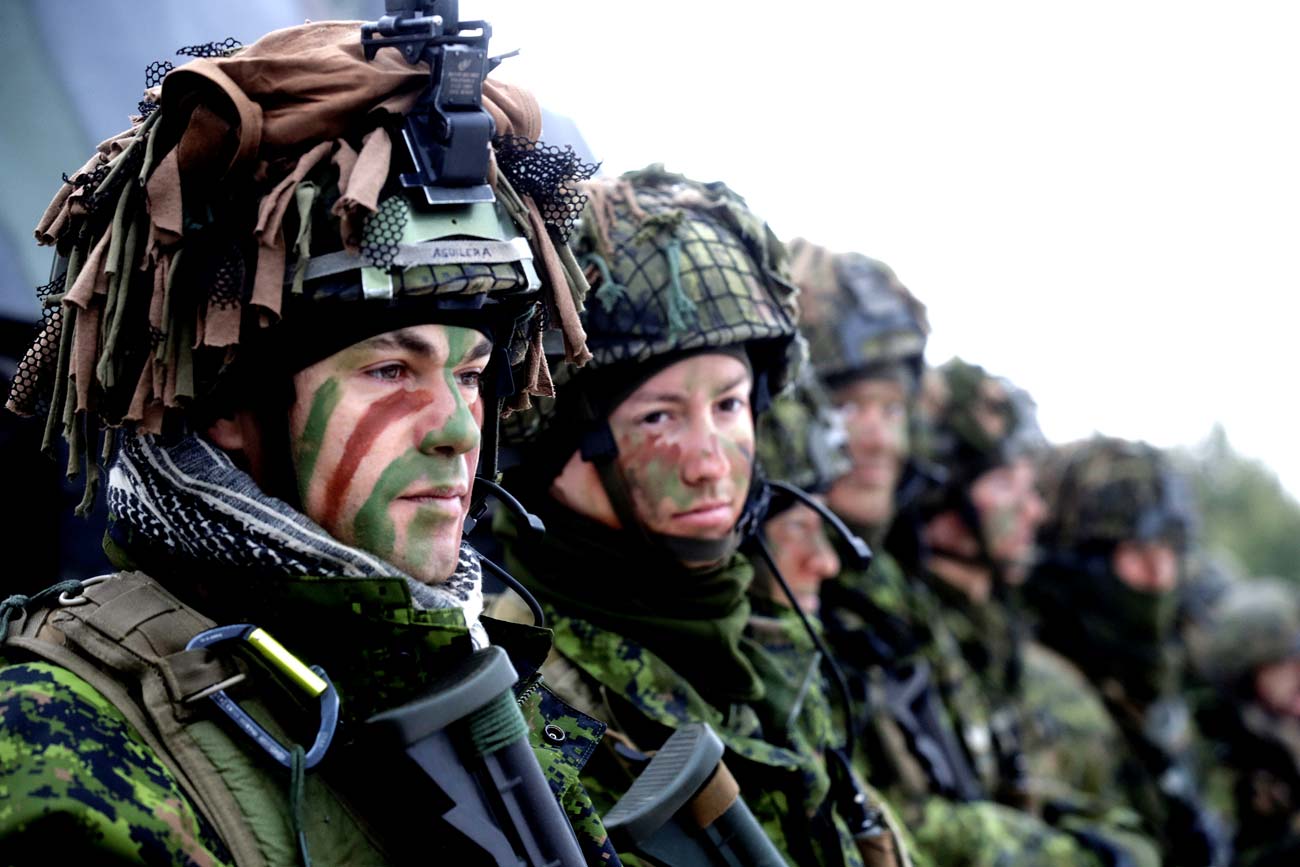
Lithuanian troops along with the other troops from 11 NATO nations take part in the exercise in urban warfare during Iron Sword exercise in the mock town near Pabrade, Lithuania.
ReutersThe Council on Foreign Relations, a U.S. NGO and research center, has published a report naming a possible conflict between Russia and NATO as first in the category of threats for the coming year whose influence is evaluated as "high" and the probability of which was considered "moderate."
The Top Threats to Watch in 2017 report mentions the "intentional and unintentional military confrontation" that could be brought about by Russia's "aggressive behavior" in Eastern Europe. RBTH asked Russian experts to outline the aspect of such a conflict and what else could potentially bring Moscow and the alliance into confrontation.
Analysts say that a conflict in Eastern Europe is very likely since it is there that NATO troops are stationed. Recently the alliance decided to send additional military contingents to the countries of the region. Pyotr Topychkanov, a researcher for the Problems of Non-proliferation Program at the Carnegie Moscow Center notes that, "being close to each other, the armed forces, by mistake or as a result of a provocation may enter into contact with each other."
In Topychkanov’s view, in this case we cannot exclude an escalation of the conflict similar to the one described in the sensational 2016 BBC seriesInside the War Room. In that scenario, if Russian troops invade Latvia, the West will be faced with the decision of whether or not to use nuclear weapons. Topychkanov remarks that although such a scenario is possible, it is "extremely unlikely," since "no one in the West or in Russia wants a war in Europe."
At the same time, in the opinion of Alexei Fenenko from the Russian Academy of Sciences’ Institute of World Security, in only one case is it possible to imagine Russia invading the Baltics – if NATO forces attempted to blockade Kaliningrad, the Russian enclave in the Baltics.
Moscow and NATO could also potentially clash in Syria. Things in Syria may exacerbate if the Western countries decide to turn their threats concerning President Bashar al-Assad into actions and begin military operations against Syrian government troops.
Analysts say that in that case military confrontation with Russian troops, which support Assad's army, is possible. However, according to Anatoly Tsyganok, a military expert and docent at Moscow State University’s department of world politics, even theoretically this is highly unlikely in the upcoming months.
He explains that in the near future the U.S. will "transfer its affairs" to Donald Trump, who will not have time for Syria. Then the season of dust storms will begin in Syria. For this reason, if some sort of escalation is possible, it will be no earlier than the end of March.
Alexander Golts, an independent military expert and editor-in-chief of the opposition online publication Yezhednevny Zhurnal (Daily Magazine), also links the situation in Syria with the upcoming change of presidents in the White House. U.S. President-elect Donald Trump constantly states that it is necessary to review Washington's foreign policy approaches, which is why for now it is difficult to predict his actions.
Golts says that experts who have talked about the threat of a conflict in Eastern Europe based their judgments on the opposition to Russia that reigned in the policies of the outgoing president, Barack Obama. This logic lies at the core of the idea of a possible conflict in Syria. However, with the election of Trump the political situation is now seriously changing.
There is also the possibility of an escalation between Moscow and the alliance because of Ukraine, although this is not high. This is related to the "format" itself of the conflict in eastern Ukraine: Officially Russia denies the presence of its troops in the region.
Political reasons are also important. Two of the four countries that are party to the Minsk negotiations on resolving the Ukrainian conflict – Germany and Ukraine – will soon hold presidential elections. In such conditions they do not need an escalation of the Ukrainian conflict, let alone an exacerbation of problems with Russia.
Russian analysts are convinced that one of the scenarios of escalation in relations between Russia and NATO is linked not with geography, but with threats in cyberspace. Lately the U.S. government has been actively accusing Russian hackers of interfering in American elections. Topychkanov believes that an escalation in relations between Russia and one of the NATO member states in cyberspace is very likely. He says that cyberattacks between India and Pakistan have become a normal part of their conflictive existence.
However, it is still not completely clear what is meant by cyber aggression and what a country that has been subjected to such aggression should do. It is possible "that if the cyberattack occurs on a nuclear power plant or a transportation facility, it may require a response of a traditional military nature," says Topychkanov.
All rights reserved by Rossiyskaya Gazeta.
Subscribe
to our newsletter!
Get the week's best stories straight to your inbox